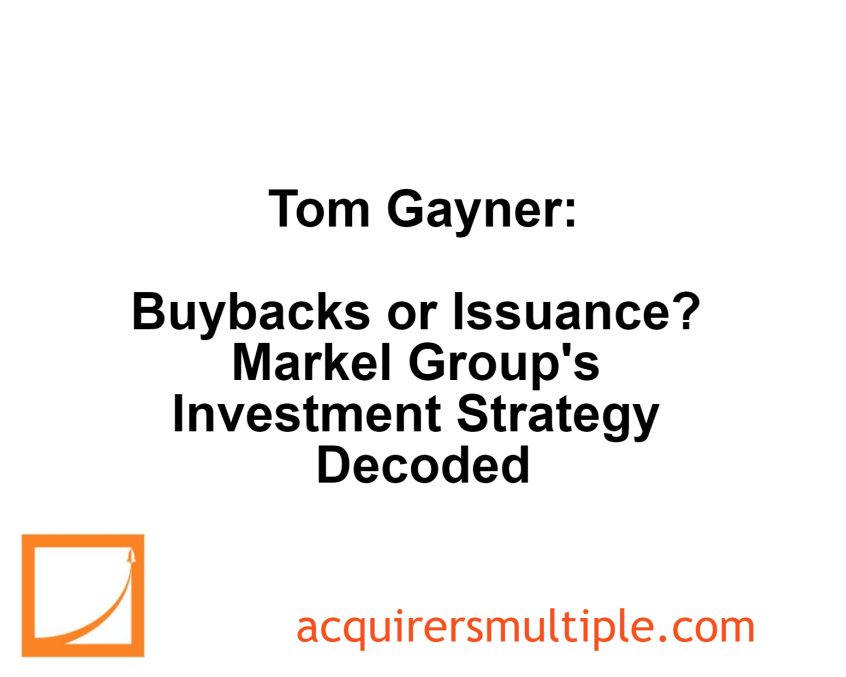In his latest 2023 Annual Shareholder Letter, Tom Gayner explains how he calculates the intrinsic value of his company’s shares. The Markel Group believes their company has two main components of value:
Orange: This represents the investment portfolio and is calculated by dividing the total investments and cash minus debt by the number of shares outstanding. They believe this is valuable because their insurance operations historically generate enough profit to cover expenses and allow them to keep the investment returns.
Blue: This represents the operational earnings from insurance and Markel Ventures, excluding investment income and adjusted for consistency. A multiple is applied to this number and then divided by shares outstanding to get the “blue” value per share.
Overall value: They add the “orange” and “blue” values to get their estimated intrinsic value per share.
This framework guides their share buyback and issuance decisions:
- They buy back shares when they believe the market price is significantly below their estimated intrinsic value.
- They issue shares when they need capital for growth, acquisitions, or financing, and the market price is above their estimated intrinsic value.
They emphasise that this is not an attempt to manipulate the stock price but rather to provide transparency into their capital allocation decisions for Markel Group shares.
Here’s an excerpt from the letter:
First, we think there is an “Orange” component of value of your company.
To figure out the “Orange” value, we add up all the investments and cash on our balance sheet and subtract out the debt we owe. We then divide that total by the number of shares outstanding to calculate a net investment per share number.
Here’s our big assumption to believe this is a meaningful number:
If our insurance operations operate with a combined ratio under 100% AND if they do not shrink in size, all of the returns from that total portfolio accrue to the shareholders. If you look at 2023, the last five years, the last 15 years, and the last 21 years—as well as all the way back to the IPO—our history and track record would suggest that is a reasonable assumption.
Second, we think there is a “Blue” component of the value of your company.
To figure out the “Blue” value of your company, we add up all the non-investment operating income totals of our insurance underwriting, non-underwriting insurance operations, and Markel Ventures businesses. We subtract out our interest expense and taxes to get a sum of the net income produced by our operations.
We normalize some of those components using three-year averages or thoughtful manual overrides. Then we assign a conservative and consistent multiple to that total. We then divide that total by the number of shares outstanding to determine the “Blue” component of the overall value per share.
Then, we add the “Orange” and “Blue” numbers together to calculate our sense of the intrinsic value per share of the Markel Group.
When the Orange and Blue calculation indicates that Markel Group shares are selling at a substantial discount, our appetite for repurchases goes up. If the market price exceeds our estimate, expect us to be willing to issue shares for growth, acquisition, or financing purposes.
We are not going through this exercise to “hype” our stock price. We are just trying to be transparent about how we think when making capital allocation decisions when it comes to Markel Group shares.
As always, we will act rationally to the best of our ability.
The beat goes on.
You can read the entire letter here:
Tom Gayner – 2023 Markel Shareholder Letter
For all the latest news and podcasts, join our free newsletter here.
Don’t forget to check out our FREE Large Cap 1000 – Stock Screener, here at The Acquirer’s Multiple:




One Comment on “Tom Gayner: Buybacks or Issuance? Markel Group’s Investment Strategy Decoded”
Hello,
Can you provide the actual number resulting from this calculation for the past few years?